This 2021/22 season has seen Queens Park Rangers fly as high as third place in the Championship. However, recent poor form has led Mark Warburton’s men to slide down the table. Even if the team from West London do not attain promotion to the Premier League, QPR can take a couple of positives from this season — one of these being the performances of Arsenal academy graduate Chris Willock, who won the November 2021 EFL Championship player of the month award.
Over the course of the campaign, Willock has starred in six different formations, five different positions, and many strike partners. To further emphasise his flexibility, Willock has not played in the same position four times in a row throughout this Championship season, achieving varying levels of success in these different positions.
In this scout report, we use data analysis to examine Willock’s performances as a sole striker, a striker with a partner and as an attacking midfielder throughout the Championship season.
How do QPR play?
All stats relating to QPR only include their performances through their 2021/22 league campaign.
To understand what former Rangers manager Mark Warburton wants from Willock, we first have to know the fundamentals of how QPR play. We will do this by looking at data.
QPR are excellent at keeping possession as they have the fifth most in the Championship with 55.2%. Rarely do you see the Rs launch the ball forward despite having Dykes and Austin who would work well in such a system. The data proves this: they have the fifth-best passing percentage with 78.4%.
The Hoops rank 12th for long balls per 90, accumulating 68 throughout a game. However, this number will be inflated due to their high possession, meaning that QPR have more chances to launch the ball forward than the likes of Derby, who rank 13th for long balls per 90.
So, QPR like to keep possession with simple short passing and create chances through possession.
How does this affect Chris Willock? Willock is not a physically dominant player so he will want the ball on the floor. He also doesn’t possess the most incredible burst of pace, so the short passing will allow for Willock to show off his technical side.
Not the best lone ranger
All statistics relating to Chris Willock are based on his performances during the 2021/22 Championship season. All QPR games mentioned were played during the 2021/22 Championship season.
Mark Warburton will want his lone striker to be one of two things. Either he will be dropping in-between the lines of defence and creating opportunities for his teammates, or he will put the ball in the back of the net. Willock fails to do either.
Having played only 210 minutes as a lone striker this season, it may be unfair to judge Willock’s performance so soon. Willock’s four appearances as a sole striker in the Championship were against Swansea (H), Blackpool (H), Blackburn (A) and Luton (A). Willock started three times during these fixtures and made a substitute appearance against Luton. However, his performances have been alarmingly poor for how good a player he is.
In the game against Swansea, Willock was not a threat in front of goal — the Arsenal academy graduate had one shot which gathered 0.01 xG. To put some perspective on this, Lyndon Dykes, QPR’s usual starting striker, has accumulated 0.3 xG per 90 in this Championship season. Even Jimmy Dunne, QPR’s promising central defender, averages 0.09 xG per 90. However, it may be harsh to criticise Willock as Swansea dominated possession with 58%. This lack of possession meant that Willock would not be able to get on the ball as much as he wanted.
It is easy to see the data and prove Willock had a bad game, but why did he?
Anticipation is key for a striker. Knowing where the ball will land or where your teammates will pass the ball is crucial for being in the correct position to score or assist. Willock does not possess great anticipation and it was on show when QPR played Blackburn at Ewood Park. Adomah made a fantastic run into Blackburn’s penalty area after some great passing from QPR. Most strikers would have jumped at the chance to potentially score, making a darting run into the box to help their teammate. Instead, Willock is behind four Rovers defenders, walking. Whether that’s a result of poor instinct, laziness or something else, this is just one example of Willock’s lack of anticipation in front of goal.
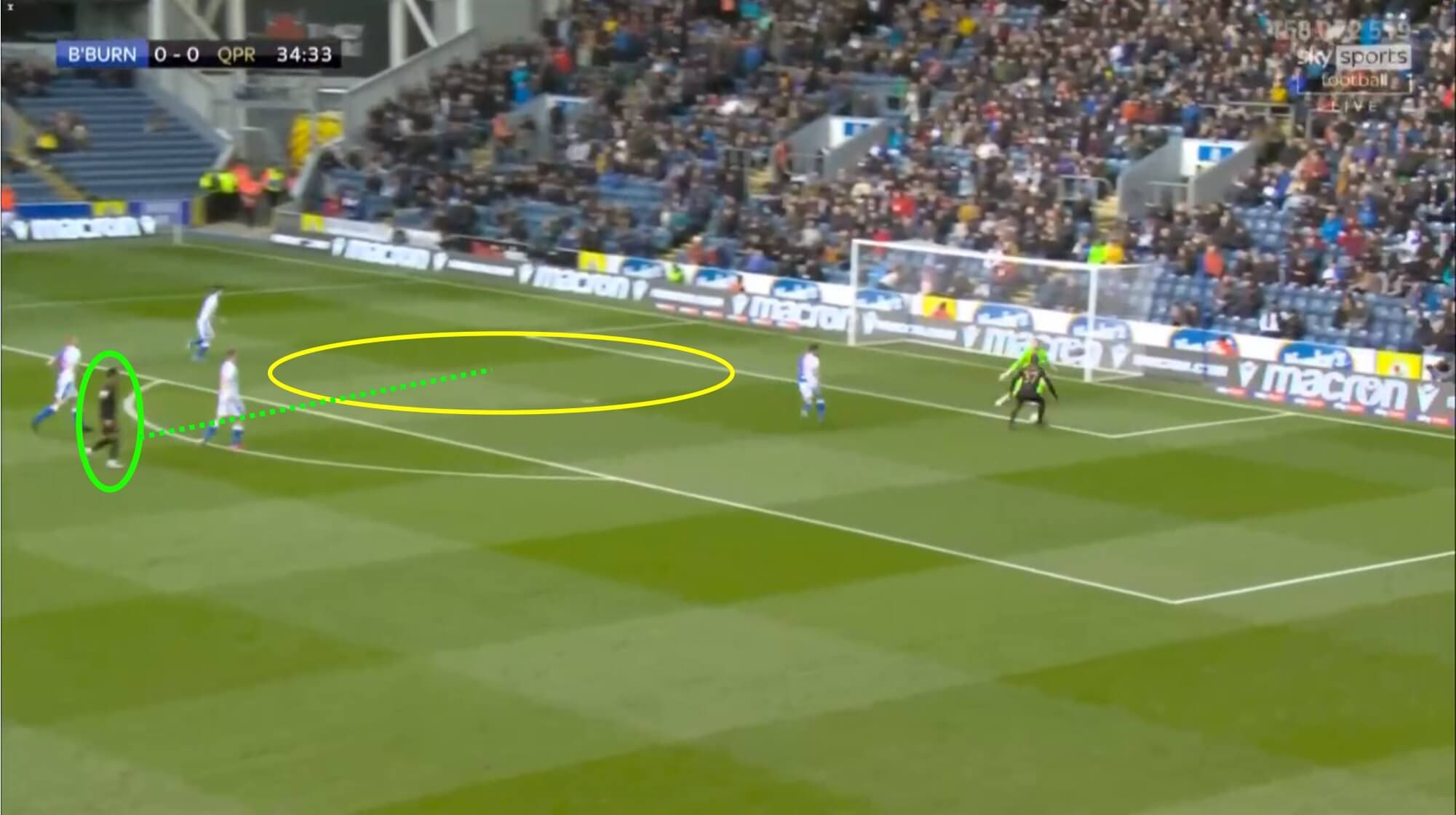
So, if he hasn’t got an eye for goal, he must be a creative striker who has excellent link-up play like Liverpool’s Roberto Firmino.
We can see here the difference between Firmino and Willock.
Firmino receives the ball from a wide position and decides to pass the ball rather than shoot. This is because of the proximity of Declan Rice, and he is so close that he could easily block any shot from Firmino. The Brazilian striker not only passes the ball successfully in a tight space, but he runs into the space left behind the on-rushing Angelo Ogbonna, leaving him open to assist Gini Wijnaldum.

Similar to Firmino, Willock picks the ball up from a wide position. This was due to QPR’s 3-4-3 formation that allows more fluid movement from the centre forward, but he feels the need to shoot instead of passing to the wide-open Jeff Hendrick. His deflected effort was the only shot that Willock would go onto have in this game.
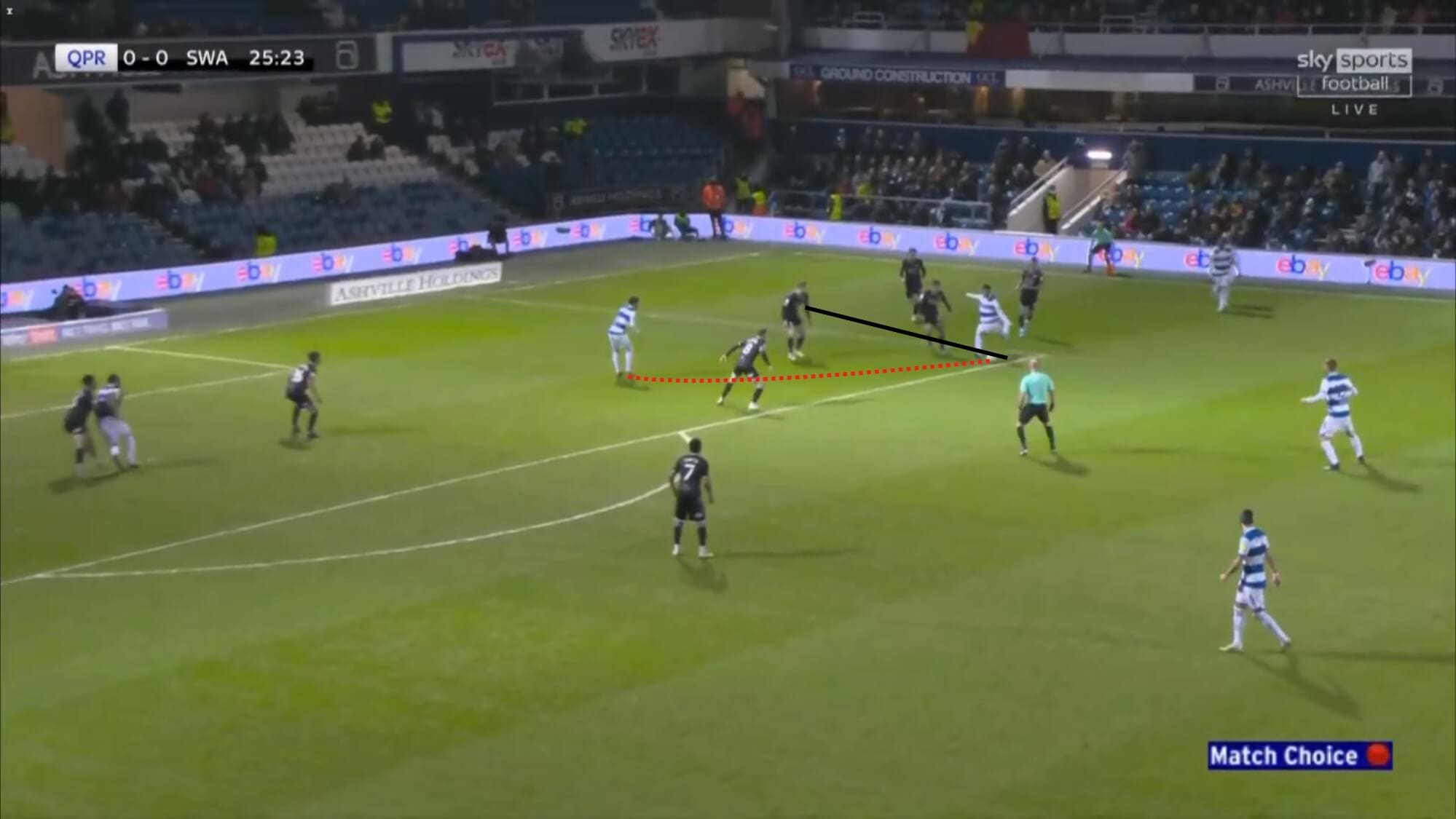
If Willock had used his vision, he could have created a fantastic opportunity for his teammate. But perhaps the pressure of being the sole striker got to him, and he decided to shoot in a poor position.
To put some context into the comparison, Firmino is obviously a better player than Willock as he has been a prominent part of one of the best sides in Premier League history. But, Willock will need to learn from the best to be the best.
Willocks progressive runs during his time as a sole striker are down to 64.5%. His numbers probably go down due to the amount of time he will spend closer to goal, where it is harder to progress further up the pitch without a defender being there.
His touches in the penalty area shrinking to 62.8% do not seem to make as much sense. His diminishing numbers may be down to the opposition that he has played against being teams that are solid on the ball, like Swansea, that can keep possession away from their opponent. Swansea finished the game with 58% possession. Or, QPR’s opposition are great defensively like Blackburn and Luton, who can make it harder for their opposition to get the ball in the box.
His reduction in touches in the penalty area may be a consequence of Willock playing wider than usual. This heatmap shows Willock’s positions over those four appearances as a sole striker. We can also see from the heatmap that Willock is never in the opponent’s six-yard box or even in central positions near the goal despite being the sole striker.

How does he compare to another sole striker?
In this section, all statistics relating to Carlton Moriss and Chris Willock are based on their performances per 90 minutes in the 2021/22 Championship season.
Carlton Morris, the Barnsley striker, has played just 686 minutes as a sole striker this campaign. The man heralding from Cambridge has put in much better numbers than Willock in a worse team.
Willock accumulates only 59% of Morris’ shots, 93% of his shots on target and only 6% of his xG. Morris scored three more goals than Willock’s zero when starting as a lone centre forward.
Despite Willock playing in an alien position, he still outperforms Morris by 81% in progressive runs and 85% for attempted dribbles.
If QPR deployed their wingers as inside forwards, Willock would play much better. This is because having two extra players for Willock to play to in central positions would allow him to play more passes near to the opposition box. The goalscoring threat from inside forwards would also take some pressure away from Willock.
However, QPR play with width on the wings. Overall, Willock would be better off just playing in a different system/position. His best attributes come from his playmaking and dribbling, both of which become more redundant as a sole striker.
Centre forward with a partner
All statistics relating to Lyndon Dykes and Chris Willock are based on their performances per 90 minutes in the 2021/22 Championship season.
Lyndon Dykes, Charlie Austin and Andre Gray are all fantastic strikers. This season, Willock’s main two partners have been Dykes and Austin, totalling just under 90% of his minutes with a striker playing with these two.
Willock’s dribbling and playmaking attributes create great chemistry up-front in a striker partnership.
His numbers are vastly improved compared to when he played as a sole striker. His shots go up 132%, xG by 1,247%, and he scores a goal every 270 minutes. Willock’s shots on target do go down by almost half, which may be because of the small sample size from his time playing as a sole striker.
It is not just his shooting numbers that go up. Progressive runs increase by 53% and touches in the penalty area by 132%. Willock’s dribble success rate does decrease to 51% from 69%. Then again, his xA does increase by 36%.
So, statistically, Willock’s performances become better with a striker partner than as a lone striker. He is better at getting into goal-scoring positions, moving the ball further up the pitch, and even creating chances.
But why? To answer this question, we have to look at what his striker partners areas his main striker partner, Lydon Dykes, is great at doing.
To understand why Dykes and Willock work well, we need to delve into Dyke’s performances as a striker with a partner and compare his data to Willock’s.
Dykes does have more minutes, almost double; this will be because Dyke’s primary position is striker, unlike Willock, who has recently moved into a striking role.
Shots-wise, Dykes produces fewer shots than Willock (82%), but his attempts are more likely to hit the target with an increase of 65%. Their xG is practically the same, and this is down to Willock shooting more often than Dykes, but Dykes shoots from better positions. Willock scores 45% more often than Dykes as well.
Willock does take the cake when it comes to playmaking and movement. Willock’s progressive runs are more than six times that of Dykes. Touches in the penalty area are securely in Willock’s favour, with the Arsenal academy graduate having more than double. Almost four times the number of dribbles attempted and nine times the number of successful dribbles. Willock dominates xA, having accumulated more than five times that of Dykes.
His importance to the team may be because of how high he plays when in a strike partnership, and Willock takes up positions in the opposition half.
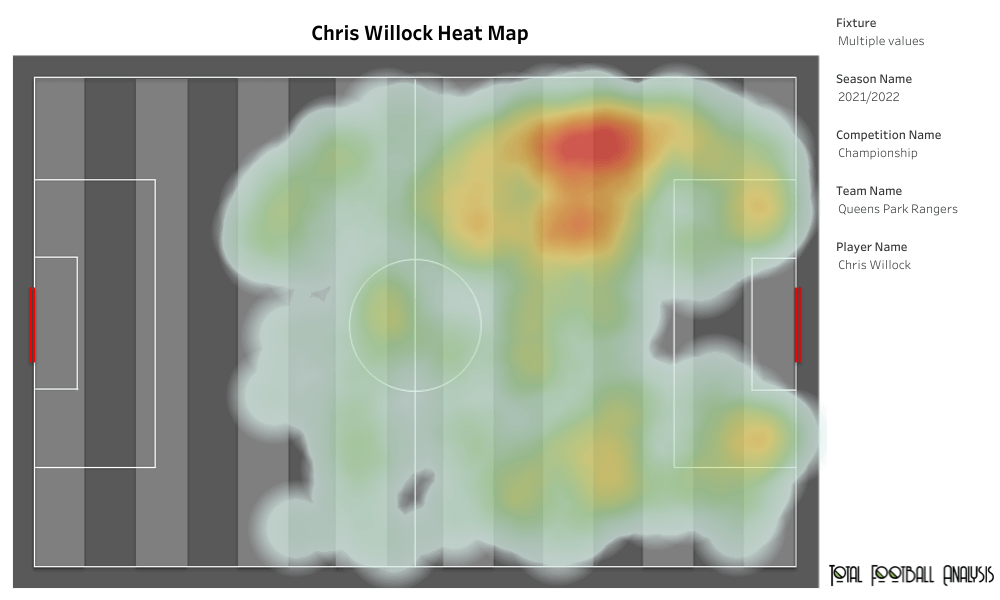
Dykes is an aerial threat as he is 1.88 metres tall (6’2”). Winning the most aerial duels out of any QPR player and 15th most in the Championship this season, Dykes takes up more positions around the typical target-man area where flick-ons would be possible.
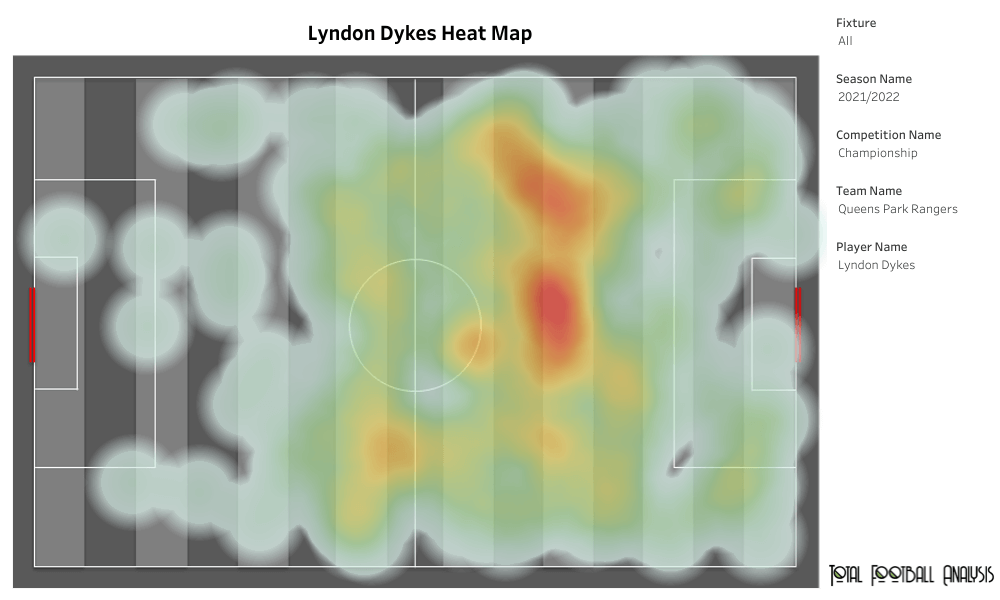
The contrasting attributes from Willock’s great playmaking numbers to Dykes’ substantial aerial numbers help make them a great partnership.
Attacking midfielder
All statistics relating to Chris Willock are based on his performances in the 2021/22 Championship season.
Attacking midfield is where Willock has played his most minutes with 1243 (41%). Willock has not performed his best here despite his increased familiarity with the role.
Compared to his time in a striker partnership, Willock produces 10% fewer shots, 35% less xG and 15% fewer goals than when he plays in his favoured attacking midfield role. We would expect worse shooting numbers because strikers typically play closer to the opposition’s goal so that they will shoot more often.
But, even some of his playmaking numbers are worse. There is a slight reduction in progressive runs, touches in the penalty area fall to 49% and his xA shrinks by 31%. His decreasing playmaking numbers are alarming, as many would suggest that Willock should be prioritising assisting the team going forward as that is the role of most attacking midfielders. Also, attacking midfielders will typically have more freedom and space to operate in, so it makes even less sense as to why his playmaking numbers are worse.
Admittedly, his dribbles do increase (11%), and his successful dribbles skyrocket (44%). His dribbles may be down to the opposition’s defence not applying as much pressure on Willock as an attacking midfielder as when he plays as a striker. This makes sense as defenders would rather a midfielder have the ball than a striker due to the relative proximity to the goal of each position. The heatmap helps to show this off. As we can see, Willock plays slightly deeper as an attacking midfielder than when he plays as a striker.
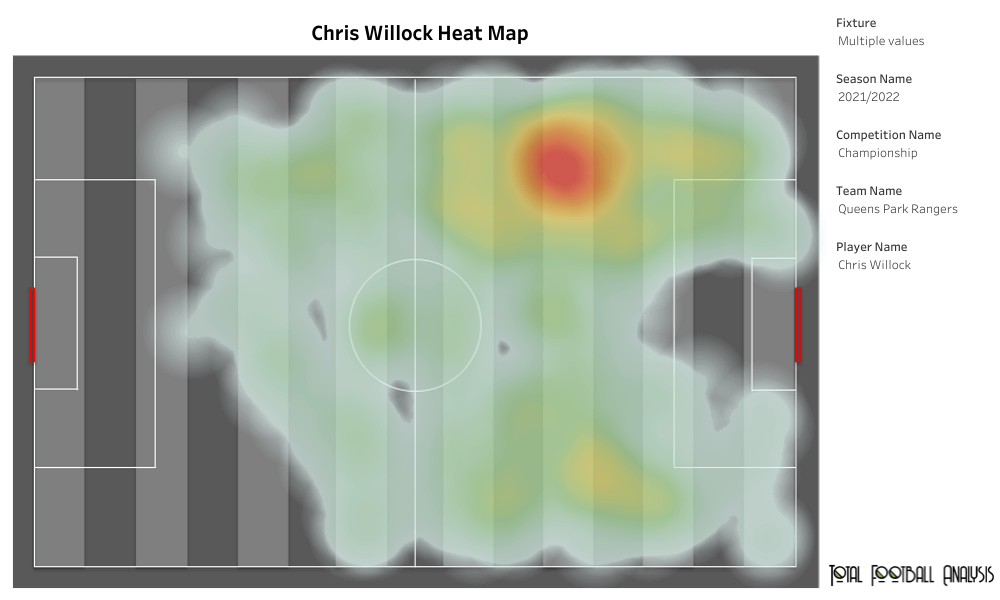
What should Warburton do?
Looking at the data and in-game highlights, Mark Warburton should continue playing Willock as a striker in a partnership. He could play Willock as a striker on his own, but he would need to play as a false nine, allowing him to use his best attributes (dribbling, passing, movement). Warburton may decide to play Willock in his more natural role as an attacking midfielder or even a left-winger. Willock finds himself on the wing anyways, no matter which position he plays, as shown by his heat map playing throughout all positions this season.
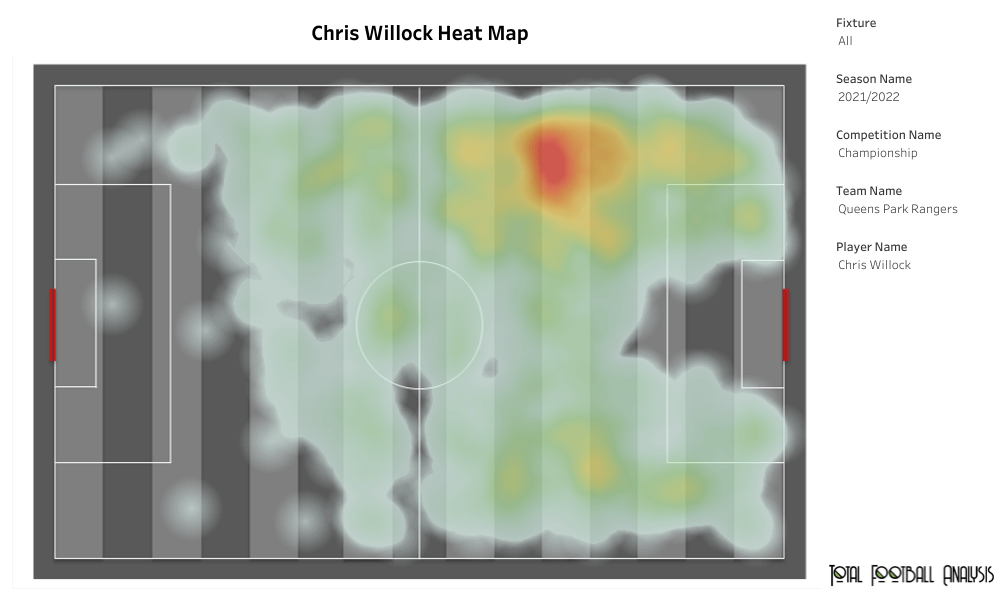
After tearing his hamstring, Warburton will miss Willock for the rest of the season, and QPR will feel that impact. Willock is an outstanding talent in the Championship, and wherever he plays, he will usually do so to a good standard wherever he plays.

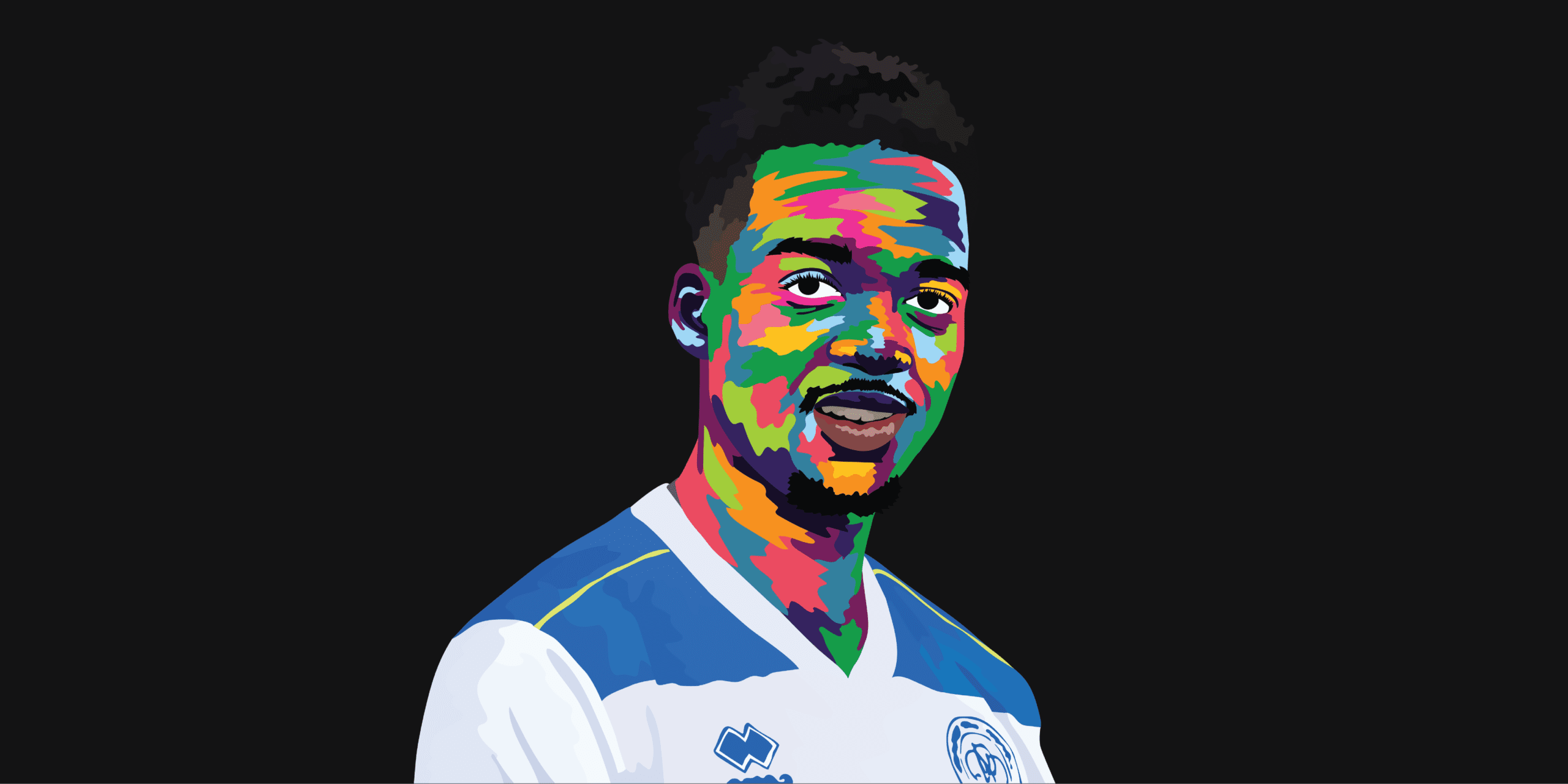



Comments